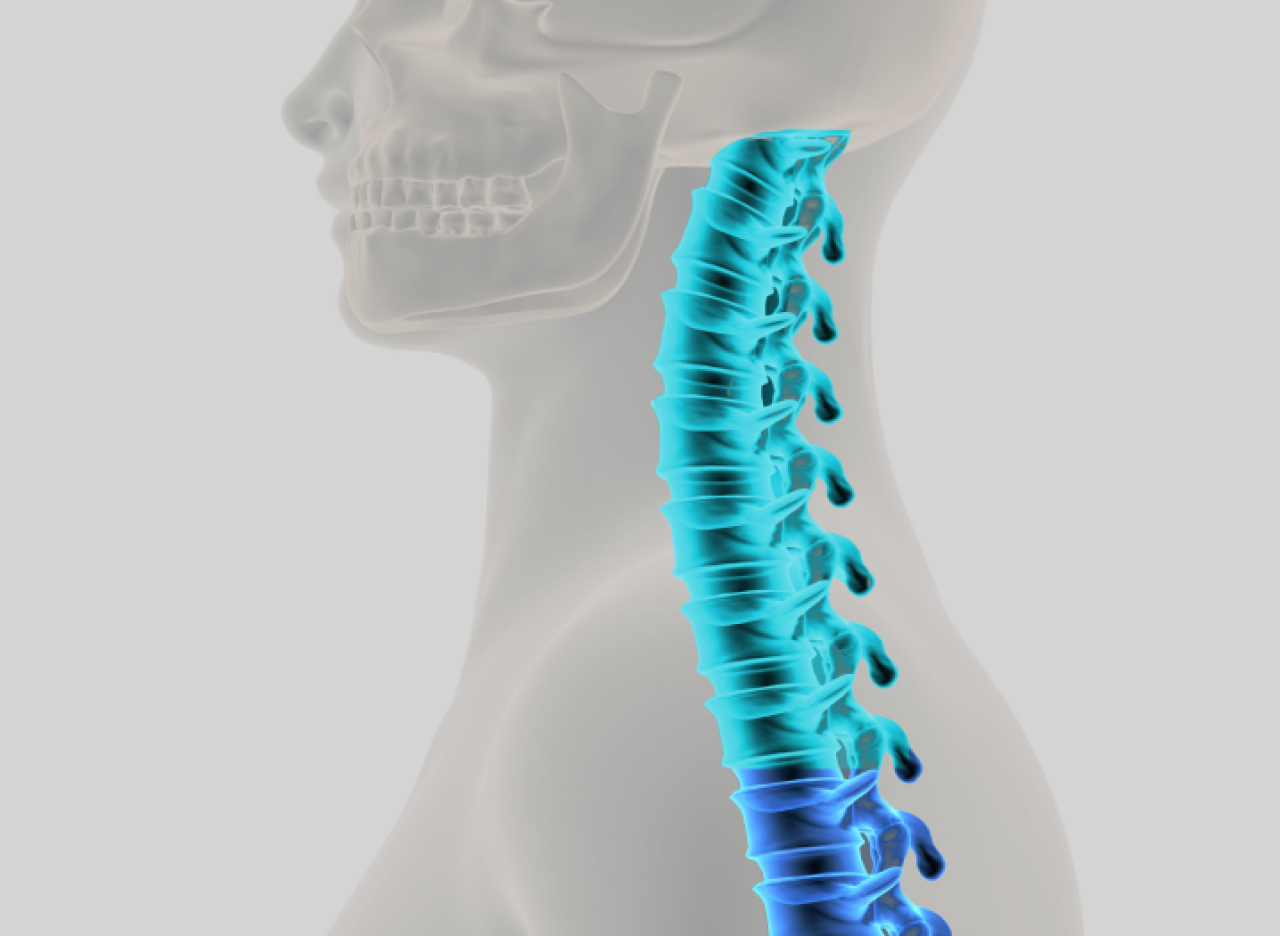Spinal services
Cervical [neck]

Anterior cervical discectomy with fusion
This surgical procedure helps relieve pressure and pain on nerve roots and the spinal cord caused by a herniated disc (bone spurs) in the neck – a condition known as nerve root compression.
1 What’s involved?
Through a small incision near the front of the neck, Dr. Ferguson accesses the cervical spine, removing all or part of the disc (and in some cases, bone material), which press on the nerves and cause pain.
Then, he will place a bone graft between two or more affected vertebrae to promote bone growth. The graft material acts as a bind, helping maintain normal disc height.
As the body heals, the vertebral bone and bone graft will eventually fuse, creating a solid structure stabilising the neck.
2 Why this procedure?
A herniated disc (also called bone spurs or osteophytes) can put pressure on nerve roots, ligaments or the spinal cord, causing:
Pain in the neck or arms
Lack of coordination
Numbness or weakness in the arms, forearms or fingers
This procedure is often used to treat conditions such as herniated discs, spinal stenosis, and degenerative disc disease. However, it is typically recommended only after non-surgical treatment methods fail. Dr. Ferguson will consider your age, health, lifestyle, the condition to be treated and your anticipated level of activity following surgery.
4 Potential risks or complications
As with any surgery, there are potential risks and complications that you and Dr. Ferguson will discuss.*
For this particular treatment, these may include: implant failure, infection, neck and/or arm pain, difficulty swallowing, voice hoarseness, bleeding or hematoma, nerve or spinal cord injury possibly causing impairment or paralysis, development or progression of disease at other cervical levels or a reaction to anaesthesia. There is also the risk that this surgical procedure will not be effective, and may not relieve or may cause worsening of preoperative symptoms.
*Always consult your physician for a complete list of indications, warnings, precautions, adverse effects, clinical results and other important medical information that pertains to the anterior cervical discectomy procedure.
Cervical disk arthroplasty
This surgery replaces a damaged or herniated spinal disc with an artificial disc inserted between the vertebrae of the neck. The cervical artificial disc functions like a joint, allowing for flexion, extension, side bending and rotation.
1 What’s involved?
Through a small incision near the front of the neck, Dr. Ferguson accesses the cervical spine and will remove the damaged spinal disc and bone material.
Then, he will insert a cervical artificial disc that will help maintain normal spacing between vertebrae and allow neck movement.
2 Why this procedure?
The discs between the vertebrae in the neck serve as cushions. Over time, they can become damaged due to factors such as age, genetics, or everyday wear and tear.
This deterioration can cause the disc or bone material to press against a nerve root or the spinal cord, leading to pain, numbness, weakness, muscle spasms, and loss of coordination in the spine and body.
Cervical artificial disc surgery aims to remove the damaged cervical disc (discectomy), alleviate pressure on the nerves or spinal cord (decompression), and restore stability and alignment to the spine.
To determine if this surgery is suitable for you, Dr. Ferguson will conduct a physical exam and other diagnostic tests, such as spinal X-rays, MRI, CT scans, myelogram, and bone scans.
4 Potential risks or complications?
As with any surgery, there are potential risks and complications that you and Dr. Ferguson will discuss.*
For this particular treatment, these may include: implant failure, infection, neck and/or arm pain, difficulty swallowing, voice hoarseness, bleeding or hematoma, nerve or spinal cord injury possibly causing impairment or paralysis, development or progression of disease at other cervical levels or a reaction to anaesthesia. There is also the risk that this surgical procedure will not be effective, and may not relieve or may cause worsening of preoperative symptoms.
*Always consult your physician for a complete list of indications, warnings, precautions, adverse effects, clinical results and other important medical information that pertains to the cervical disc arthroplasty procedure.
